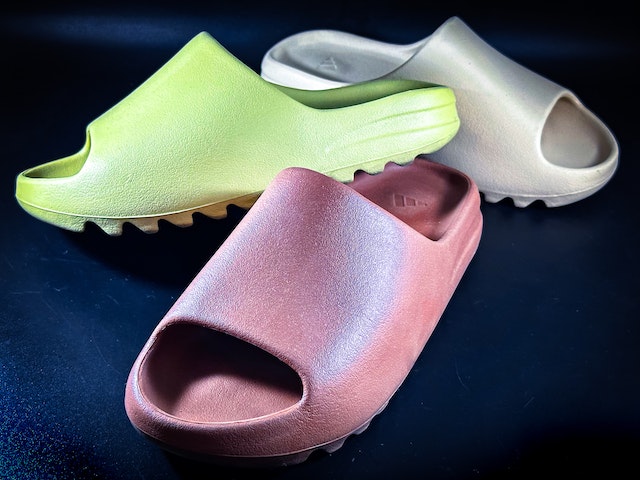How To Clean Fiberglass From Mattress
It can be quite frustrating when you find fiberglass particles inside your mattress, especially if they were not there before. There is a possibility that fiberglass can become airborne and settle onto your mattress. The irritation and discomfort it can bring can be caused by the fact that fiberglass is used for insulation or as a fire-resistant material, both of which may result from fiberglass becoming airborne. The cleaning of a mattress requires the handling of fiberglass with care, as well as the use of specific techniques to ensure that all particles are removed without spreading the particles to other parts of the mattress during the cleaning process.
The composite materials that are used in mattresses are made with glass-reinforced plastic, which is a very popular material because it minimises the likelihood of them catching fire. There is, however, no guarantee that it will be free of any potential hazards when it comes to flame protection standards, just because it has met these standards.
The research we have done in the past has led us to find that while fiberglass is harmless enough to be inserted into the inner cover component of a mattress, if the fabric of that inner cover fabric wears away to an extent that it allows fiberglass material to leak through and create havoc in the home and on the body.
Step-By-Step Clean Fiberglass From Mattress
-
Understanding the Risks of Fiberglass on Mattresses:
If fiberglass fibers are inhaled or come into contact with the body, they can cause irritation to your skin, eyes, and respiratory system as they contain fine glass fibers that are irritating to the skin, eyes, and respiratory system. You should take immediate action when you find that fiberglass particles are settling on your mattress. This will prevent further exposure to the material and ensure that your mattress is clean and safe for you and your family.
-
Preparation and Safety Measures:
In order to avoid spreading the fiberglass particles throughout the room, ensure your safety before you begin cleaning fiberglass from your mattress:
- Safety Precautions: Ensure that you are wearing protective clothing, including long sleeves, gloves, and a face mask so that you can avoid direct contact with fiberglass particles and prevent inhalation of them.
- Isolate the Affected Area: Remove any bedding, pillows, or covers that may have been present in the area that is affected. There is no need to worry about fiberglass particles spreading from the mattress to the surrounding area or spreading inside the mattress itself.
- Ventilation: If you have an open window or a fan in your room, you can improve the air circulation within the room. As a result, any fiberglass particles in the air will be dispersed more effectively.
-
Dry Cleaning Method:
Here is a step by step guide on how to dry clean your mattress in order to remove fiberglass particles from it:
Vacuuming: When vacuuming, the affected area should be gently vacuumed with an upholstery attachment or a vacuum cleaner with a brush attachment. The greatest amount of fiberglass particles should be removed from the seams, crevices, and the entire surface of the mattress in order to prevent any further damage.
Sticky Tape or Lint Roller: Use a lint roller to pick up any fiberglass particles that may still remain on the surface of the mattress by pressing adhesive tape against it. To ensure maximum contact with the affected area, apply light pressure to the tape or the lint roller while rolling it over the area.
Dispose of Waste: To prevent fiberglass particles from being released back into the air, the used vacuum cleaner bag needs to be sealed or the canister needs to be emptied carefully. The waste should be placed in a sealable plastic bag and then placed in an appropriate container for disposal of waste.
-
Protective Mattress Encasement:
In order to avoid fiberglass particles from setting on the surface of your mattress in the future, it is advisable to use a protective mattress cover or encasement. Make sure you choose an encasement with a specific design to prevent tiny particles like fiberglass from entering.
-
Professional Cleaning:
The best way to get rid of all fiberglass particles from your mattress in severe cases is to seek professional mattress cleaning services if you are unable to remove all fiberglass particles from the mattress by yourself. It is important that the mattress be deep cleaned by professionals with the right equipment and expertise to ensure that the mattress is clean and safe to sleep on.
How To Identify Fiberglass In A Mattress?
There are many different types of synthetic materials that are used in mattresses as fire retardants, but if fiberglass escapes from the mattress and gets airborne, it can cause serious health problems. You may be wondering if your mattress contains fiberglass in it, and if so, here are a few tips to help you identify fiberglass in your mattress if you have concerns about it.
Symptoms of Fiberglass Exposure
You may be able to identify fiberglass in your mattress in one of a few different ways if you suspect it may be there. There are a few ways in which you can determine if you have been exposed to fiberglass. Some of the symptoms of asthma can vary from person to person, but some of the most common symptoms include skin irritation, coughing, wheezing, and difficulty breathing, depending on the individual.
Inspection Techniques
It can be a challenge to identify fiberglass in a mattress, because it is not always apparent to the naked eye that the material is made of fiberglass. It is, however, possible to inspect your mattress for fibers of fiberglass and determine if it is actually made up of these fibers by using certain techniques.
The use of ultraviolet or black light is one of the most common ways of inspecting a product. There will be a vibrant glow in the dark caused by the emission of light from any small particles of glass fibers, enabling them to be easily detected in the dark.
There is also another way to clean your mattress; you can use a vacuum cleaner to collect loose fibers that may have been embedded in its fabric by running it over the surface of the mattress.
You should also keep an eye out for the manufacturer’s label attached to your mattress, which may indicate that the mattress is made out of fiberglass materials, or if it does not.
It won’t take you long to figure out the true contents of your mattress by following these simple tips and tricks, and you will be able to take action before anything goes wrong!
What happens if fiberglass gets in your skin?
The skin can become irritated and uncomfortable if fiberglass gets into the pores of the skin. In addition to itching, redness, and prickling and stinging sensations, these tiny fibers can also embed themselves in the skin and cause itching, redness, and itching. Here are some of the most important points to know about fiberglass and how it affects the skin in the following way:
-
Irritation and itching: Fiberglass can cause the skin to itch and cause irritation, which can be accompanied with redness and an appearance of a rash.
-
Sensation of tiny splinters: Many people describe the sensation of their skin being pricked by tiny glass fibers, as though they have tiny splinters in their skin and a feeling of pain, prickles, and stinging.
-
Delayed symptoms: There is a possibility that you may not develop symptoms immediately after being exposed to fiberglass. It is possible that they will appear several hours or even days after being exposed to the substance.
-
Avoid scratching: I understand that itching can be an annoying sensation, but as long as you refrain from scratching the affected area, it will only worsen the irritation, adding to the risk of infection and potentially causing a skin break.
-
Seek medical attention if necessary: If you encounter symptoms that persist or are severe, or if you are concerned about the extent of your fiberglass exposure, then it is recommended that you seek medical attention. Depending on the situation, a healthcare professional may be able to evaluate the situation and provide advice or treatment that is appropriate.
-
Treatment options: There are various methods for treating fiberglass skin irritation, including washing the area with mild soap and water, applying soothing lotions or creams to relieve itching, and using over-the-counter antihistamines to prevent allergic reactions. Healthcare professionals may need to use adhesive tape or tweezers in some instances in order to remove embedded fibers that have become embedded in the body tissues.
-
Prevention is key: If you are working with fiberglass materials, you need to be aware of possible skin irritation and take precautions to avoid getting fiberglass into your skin. The suitable protective clothing should be worn, such as long sleeves, gloves, long pants, and safety goggles, to minimize the direct contact with the skin. To avoid inhaling fiberglass particles, make sure that work areas are well ventilated, and wear appropriate respiratory protection, such as masks, to protect against inhaling fiberglass particles while working.
In the case of skin irritation caused by working with fiberglass or if you have concerns about exposure, it is always best to consult with a healthcare professional for guidance and appropriate treatment if you experience skin irritation while working with fiberglass.
Is It Safe To Clean Fiberglass From A Mattress?
There is no problem with cleaning fiberglass off a mattress as long as it is done properly. For a successful fiberglass mattress cleaning, it is recommended you use an approved vacuum cleaner in order to minimize the release of fibers from the mattress.
It is also recommended that you dampen the bedding surface and immediately vacuum away any hairs that have been released from the bedding. Use diluted laundry detergent with a sponge to wipe off stubborn dust accumulations on the mattress. Follow that by wiping it dry with another clean cloth immediately afterward, so as to prevent an accumulation of dust or dirt on the mattress.
If you want to reduce static build-up in your bedding, spray a light stream of fabric softener after vacuuming or washing any surfaces that have come in contact with fiberglass particles. A light stream will eliminate any static build-up.
Lastly, before allowing anyone to sleep on the mattress again, use sticky tape to test for the presence of any remaining particles. If you take care of your mattresses properly, you will be able to keep them clean and free of fiberglass accumulation for many years to come.
Conclusion
The removal of fiberglass from a mattress should be carried out with caution, thoroughness, and a strict adherence to safety measures. If you follow the steps outlined in this comprehensive guide, you will be able to successfully remove fiberglass particles from your mattress in order to create a living and sleeping environment that is safe and clean. In order to prevent further exposure to fiberglass particles, it is essential to always prioritize your safety and take measures which will prevent further exposure. If you clean the mattress properly, you will be able to sleep on a clean mattress without any worry and will be able to enjoy a good night’s sleep.
FAQs
Should I worry about fiberglass in my mattress?
Your mattress does not contain fiberglass, so you do not have to worry about it. Despite the fact that fiberglass can lodge in your skin, it is not a health hazard since it does not cause your skin to become inflamed. There are several studies that demonstrate the fact that fiberglass is not a cause of skin problems, according to the American Academy of Dermatology.
How do you get fiberglass out of bed sheets?
When you use a vacuum cleaner to clean your bed sheets, you will be able to remove fiberglass from them. The first thing that should be done is to remove as much fiberglass by hand as possible. In order to remove the remainder of the debris, you will need to use your vacuum cleaner.
How can I tell if my mattress has fiberglass?
The mere fact that a mattress may contain fiberglass cannot be determined with certainty, as the material might be hidden deep inside the upholstery of the mattress. It is still possible, however, to determine whether a mattress might have fiberglass by observing some clues. There are several factors that can indicate whether or not your mattress has been made using fiberglass, such as its unusual stiffness or rough texture. The mattress may also contain fiberglass if it emits an unusual odor, as well as emitting a strange odor when it is opened.
How do you clean up fiberglass contamination?
As far as cleaning up fiberglass contamination is concerned, there are a few ways to do so. One of the ways in which fibers can be removed from the ceiling is to use a HEPA vacuum. In addition to that, another method is to wet the area with a detergent and then use a wet-dry vacuum to remove the fibers that are in the area.
Do all mattresses contain fiberglass?
Fiberglass is not a component of all mattresses. In addition to foam mattresses, there are mattresses made from cotton, wool, latex, and memory foam that are made from alternative materials.
Can you wash fiberglass out of sheets?
The answer to this question is yes, fiberglass can be removed from sheets by washing them. While this is a tedious process, it may not be worth it in the long run because it is a lengthy process. In order to soften the fiberglass, the sheets will first need to be soaked in hot water for a sufficient amount of time. Using a scrub brush, you will need to scrub the fiberglass off of the sheets, and then you will be able to wash the sheets again. After rinsing the sheets with cold water, you will need to dry them off.
Will washing clothes remove fiberglass?
Fiberglass can be removed from clothes by washing them. Using a vacuum cleaner with a HEPA filter is the best way to remove fiberglass from a surface.
Is fiberglass dust harmful?
It is true that fiberglass dust can be harmful if inhaled. As a result, respiratory problems, skin irritations, and eye irritations can occur as a result of exposure to it.
What to do if you get fiberglass on you?
It is key to get fiberglass off of yourself as soon as possible if you have got it on you. The fibers can be removed using either a brush or your hands, depending on how you want to do it. Do not let the fibers get into your eyes. Make sure to stay away from them at all times. The only thing you need to do if you come in contact with them is to rinse your eyes with water and seek medical attention if necessary.
Can you vacuum fiberglass?
There is no doubt that fiberglass can be vacuumed. The fibers, however, should be taken care to avoid inhaling them, as they can have harmful effects on the lungs if inhaled. If you are vacuuming fiberglass, it is always a good idea to wear a dust mask.
Does baby powder help with fiberglass?
It is impossible to give an absolute answer to this question as baby powder is not commonly used for fiberglass insulation as it is not a common practice. The use of baby powder might, however, be helpful in reducing the amount of fiberglass particles that become airborne when the insulation is disturbed, as some people believe this will make it easier to minimize the leakage.
How long does fiberglass stay in the air?
There is a large amount of time that fiberglass can remain in the air. Due to its small size, it can be easily inhaled as a small particle. As well as getting into the water supply, it is also possible for it to get into the food supply.
Does vinegar dissolve fiberglass Reddit?
Vinegar will dissolve fiberglass over time, but it is not a very effective cleaner. For best results, use a commercial fiberglass cleaner.
What stops itching from fiberglass?
It is possible to stop the itching that can be caused by fiberglass by doing a few things. Whenever you are working with fiberglass, it is important that you wear the proper protective equipment in order to keep you safe. It is recommended that you wear a dust mask to protect your nose and mouth as well as safety goggles to ensure that you do not inhale any fibers. If you are experiencing itching in the area, you can also use cold water to rinse it off to help reduce the itching. There are several topical creams or ointments that you can use to help relieve itchiness if the itch is really bad.






